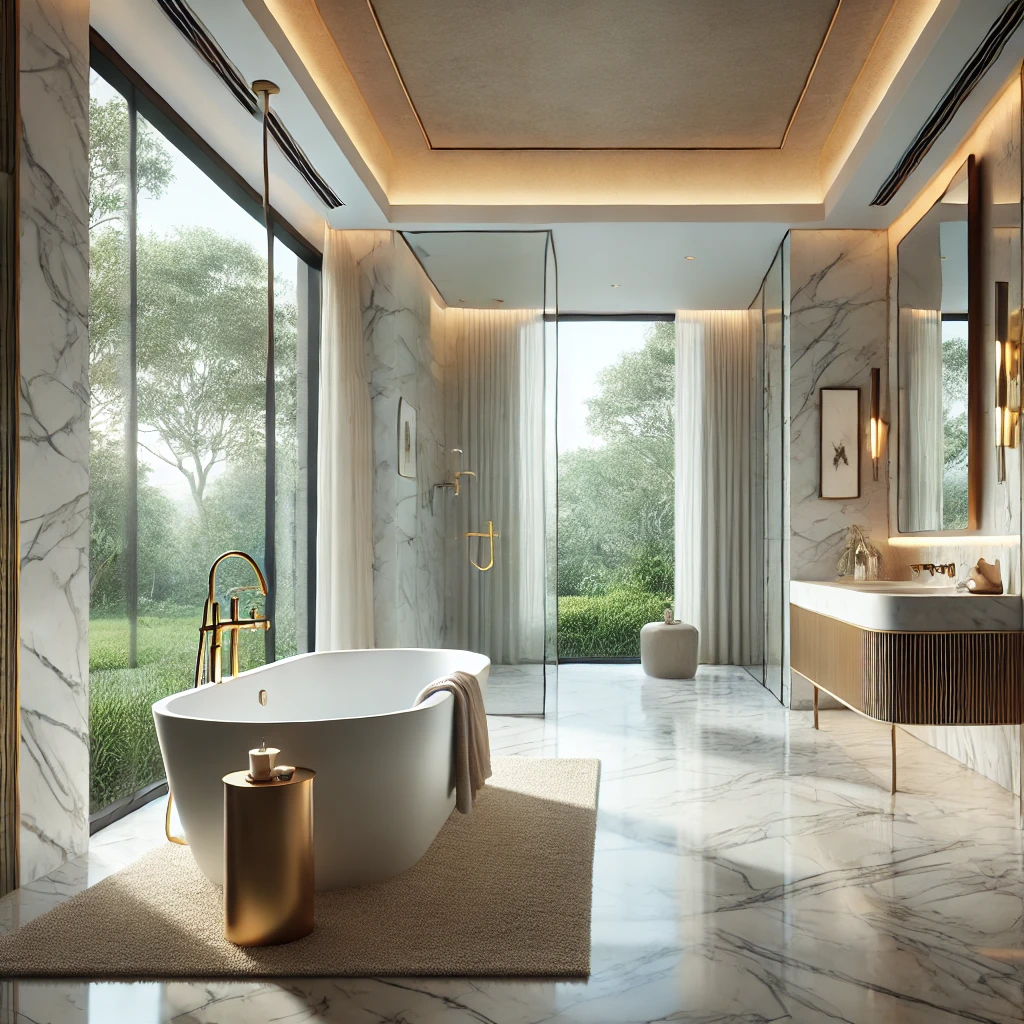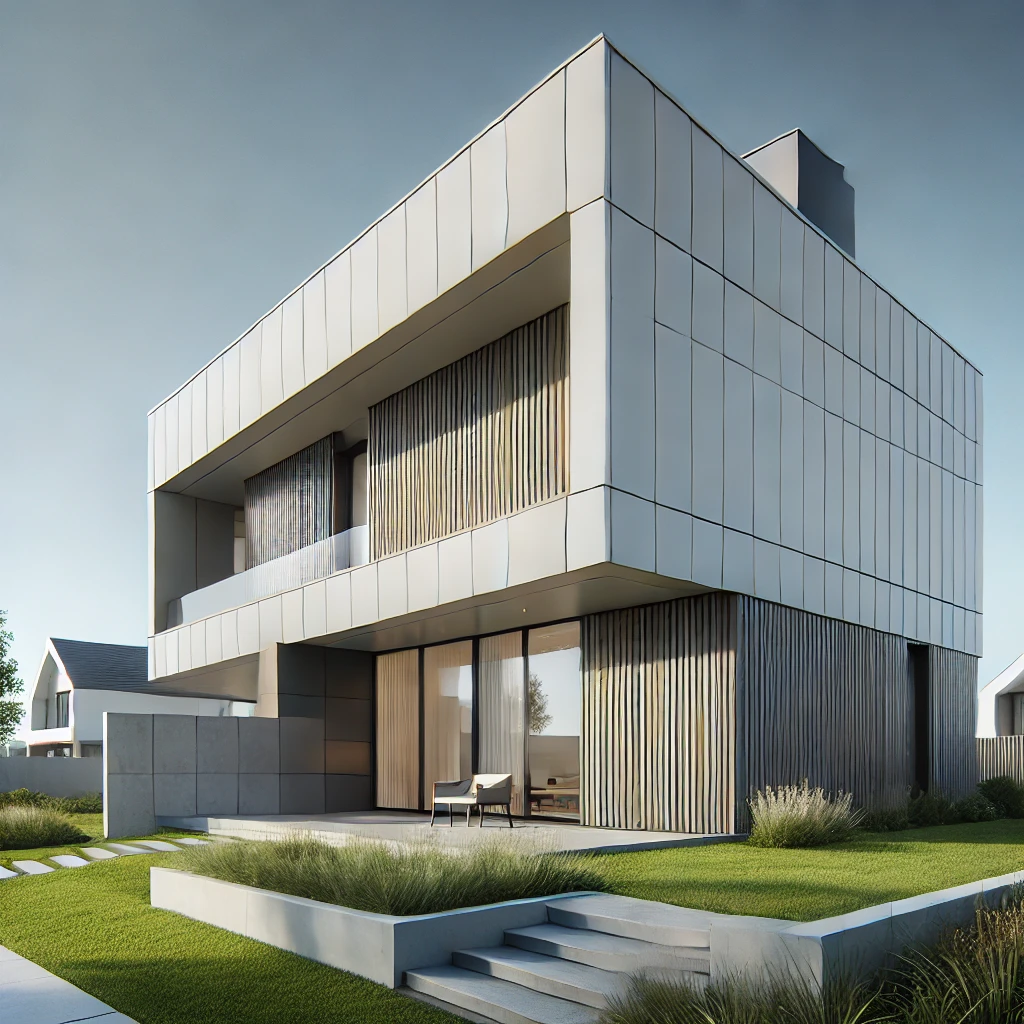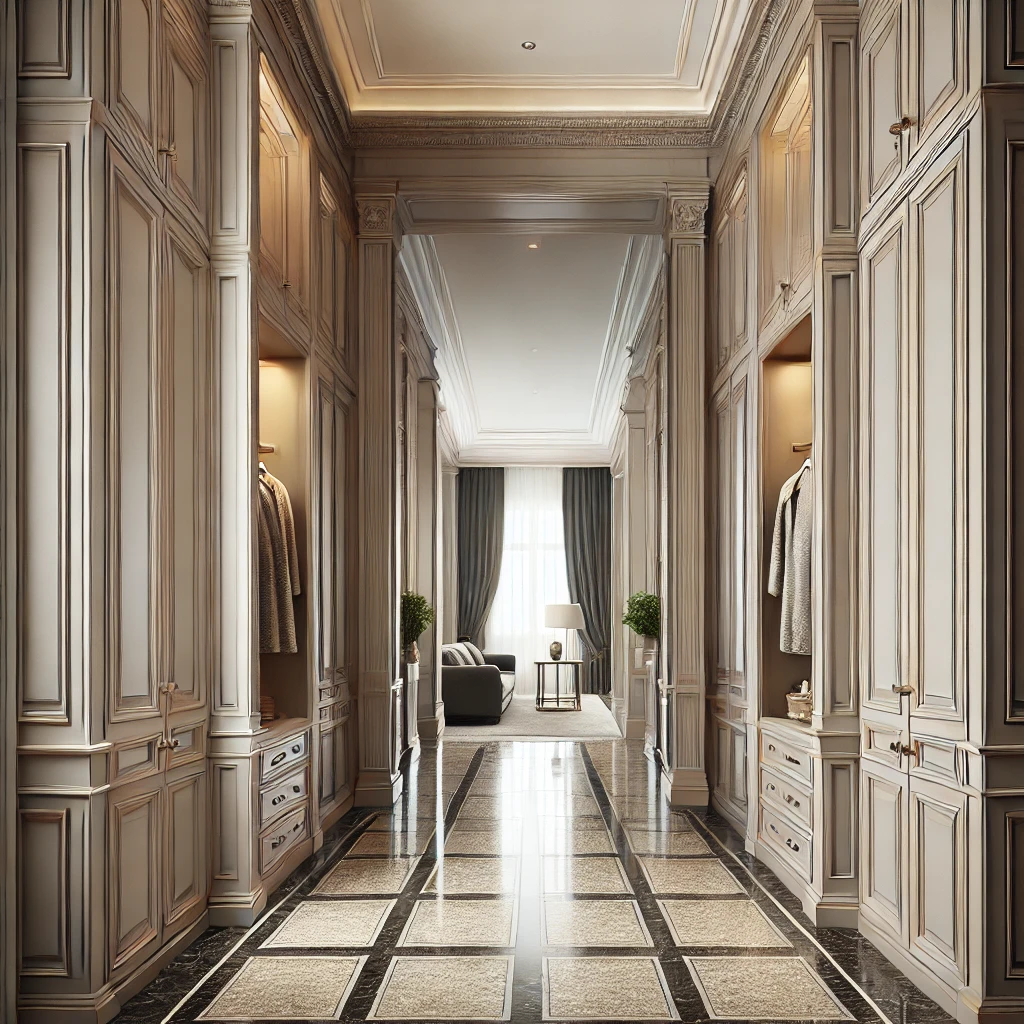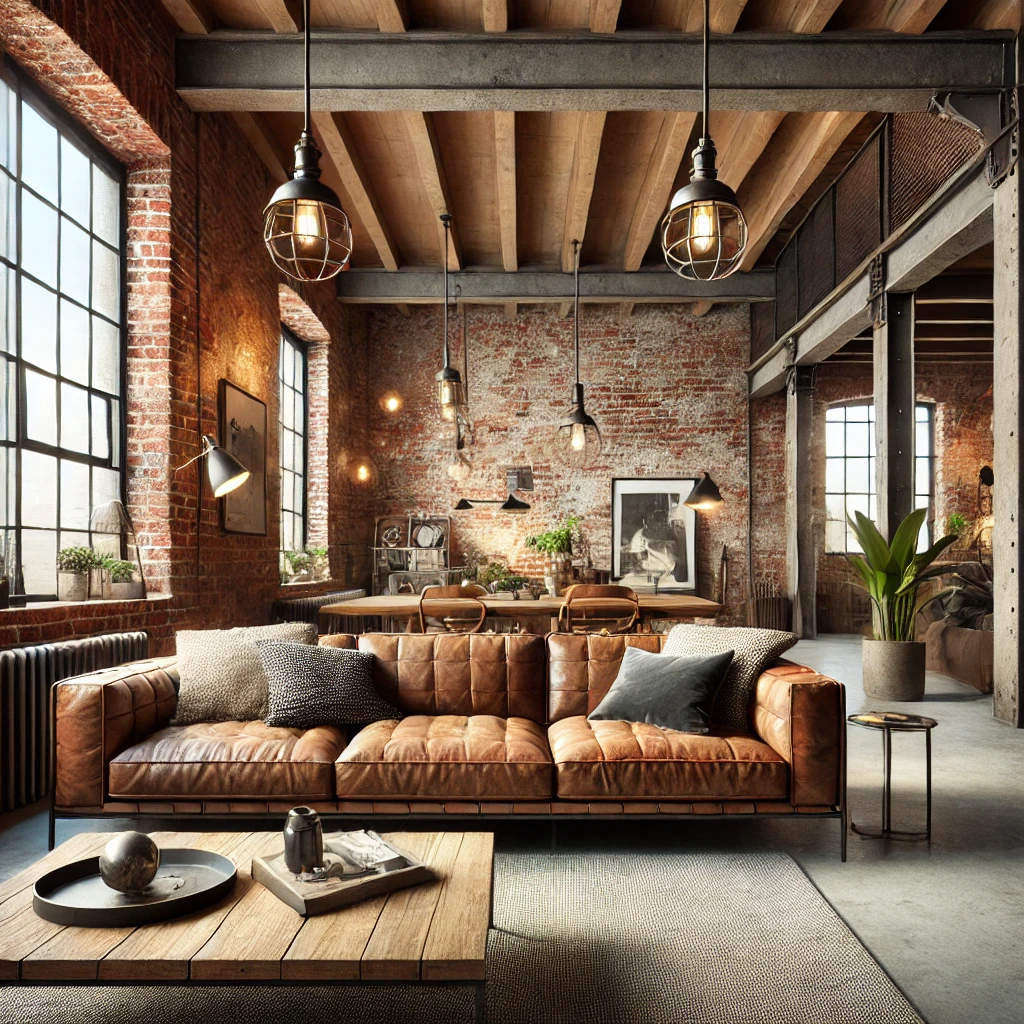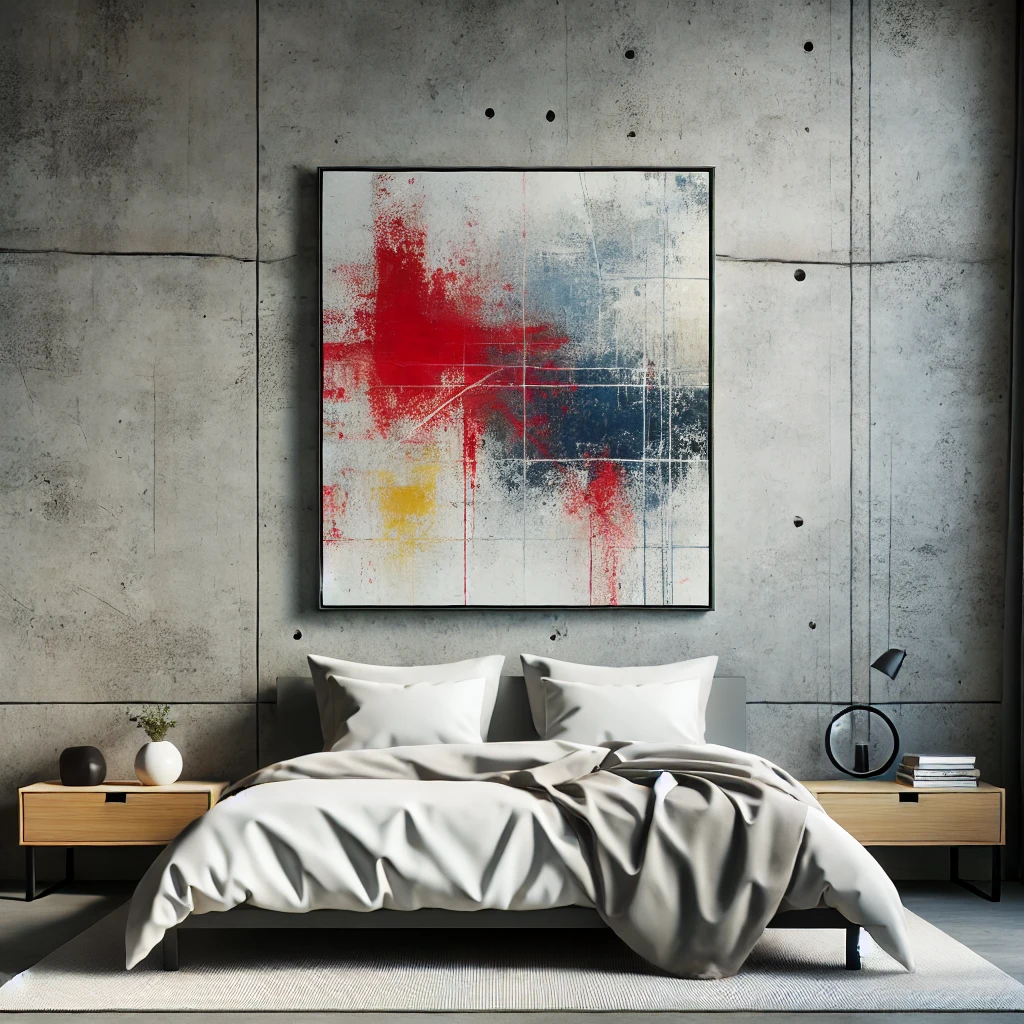Materials: 6 Technologies for Creating Concrete-Effect Walls
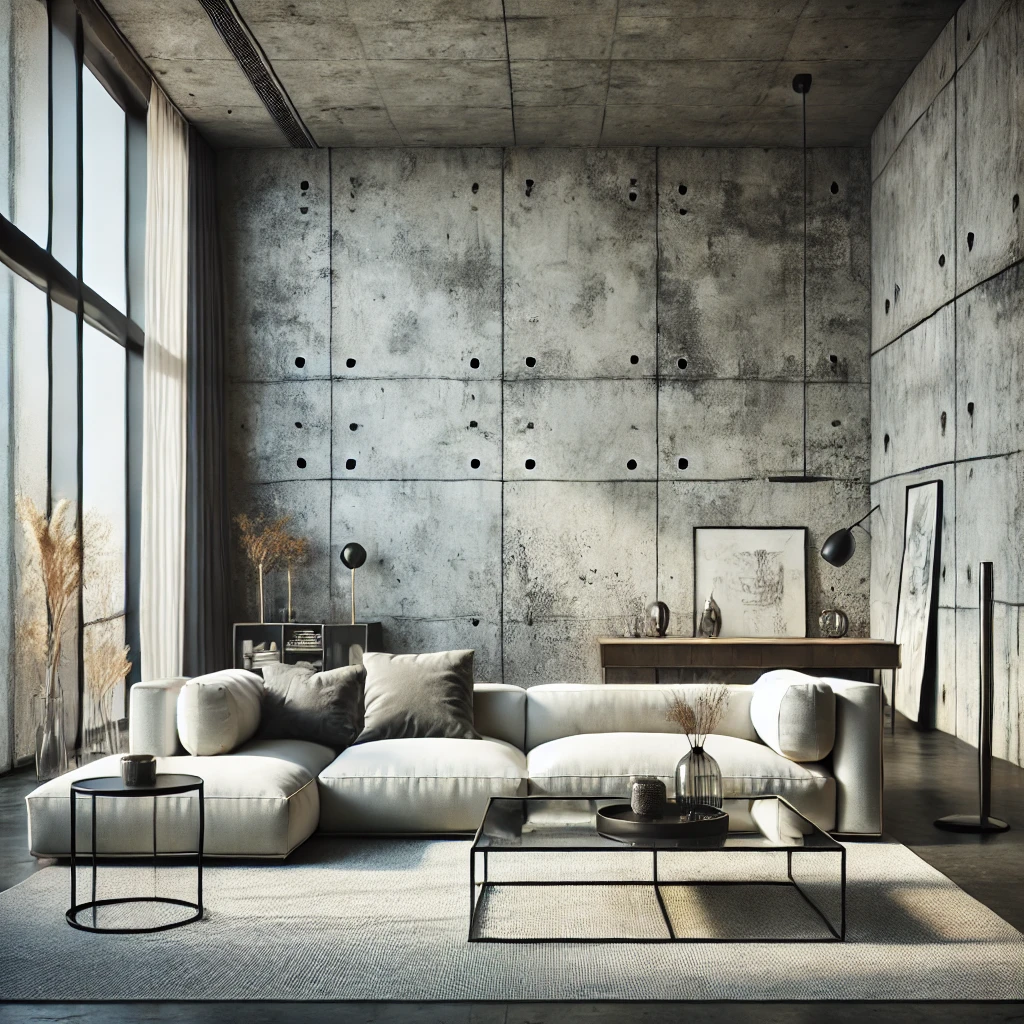
Do you love the aesthetic of concrete but lack exposed concrete walls at home? The concrete effect is easy to achieve using plaster, panels, or wallpaper. Concrete is currently trending in interior design, but let’s forget about the concrete panel buildings from the 1950s-70s and focus on the works of Tadao Ando, the Japanese architect who pioneered the use of concrete in interiors. His architecture of clean forms, such as the Vitra Conference Pavilion, elevated concrete from a quick-build material to a refined, deliberate choice.
Modernism enthusiasts know how poetic and beautiful concrete can be. The recent trend towards industrial style and lofts has further popularized this material. Concrete in interiors is far from unfinished; it’s understated and elegant. Let’s explore how effectively concrete can be incorporated into your home and the techniques available to create this look after the main construction is complete.
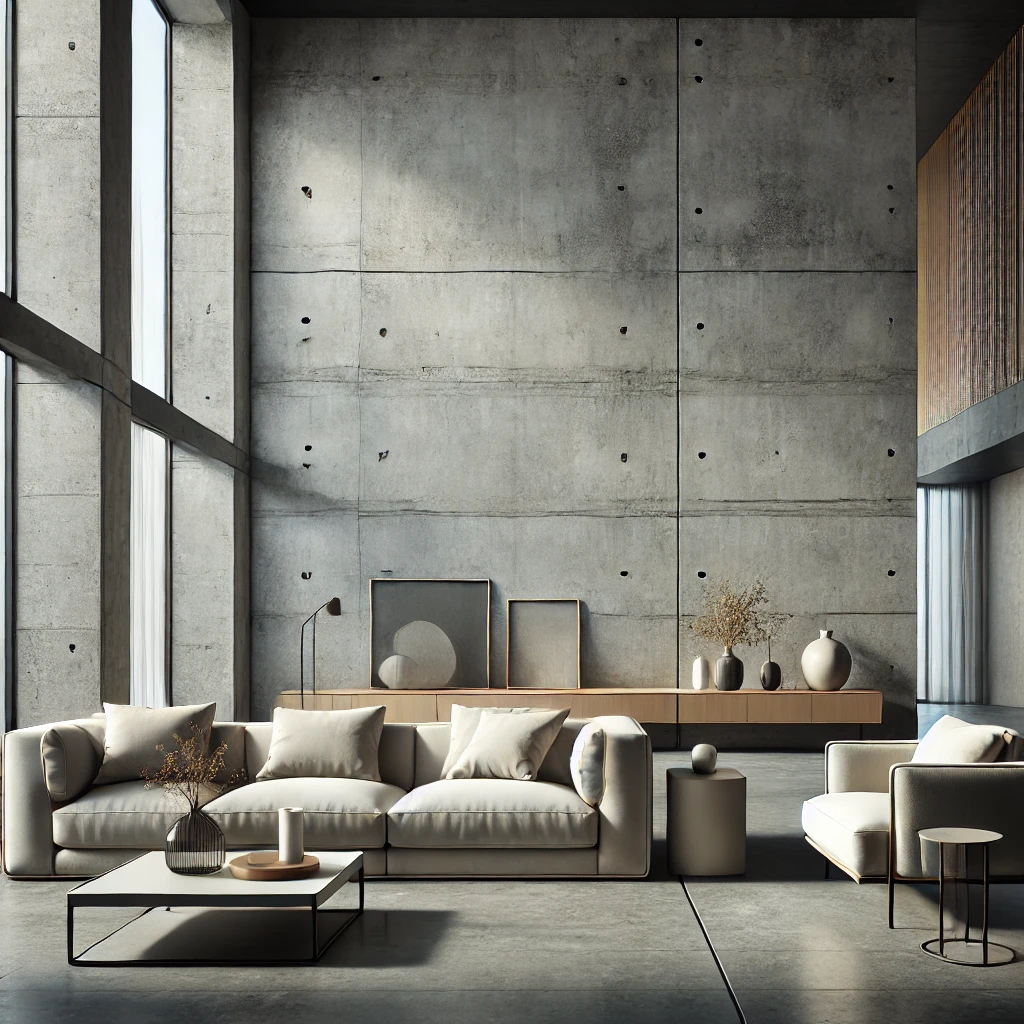
1. Pure Concrete
In the spirit of Tadao Ando, a building’s structure can be made entirely of unpainted concrete. However, it’s essential to remember that poured concrete is unforgiving, so the interior design should be planned before construction begins. Even before the ceiling is poured, the placement of embedded lights must be decided, as chipping away at architectural concrete later is not recommended.
Mastering architectural concrete requires precision, down to the millimeter. The formwork for walls, ceilings, and stairs must follow a strict design. The placement of tie rods for the formwork needs to be carefully planned, as their removal will leave visible round indentations on the surface, which contribute to the characteristic look of concrete.
2. Mineral Plaster with a Concrete Effect
It’s possible to create the look of concrete walls even after the main construction is finished. Various types of mineral plaster, such as lime, lime-marble, cement, microcement, or Beton Cire (a lime-cement decorative plaster), can be used. Professionals can apply these plasters to achieve a textured surface that mimics real concrete, complete with formwork seams.
Lime plaster, for instance, is a mineral material that has been used for centuries. It filters harmful substances from the air, creating a healthy living environment, making it ideal for living rooms and bedrooms. In bathrooms and kitchens, a trowel-applied material like Terrastone, which contains natural ingredients such as alabaster, marble, lime, and white cement, is recommended. It’s elastic, durable, and suitable for areas with variable humidity.
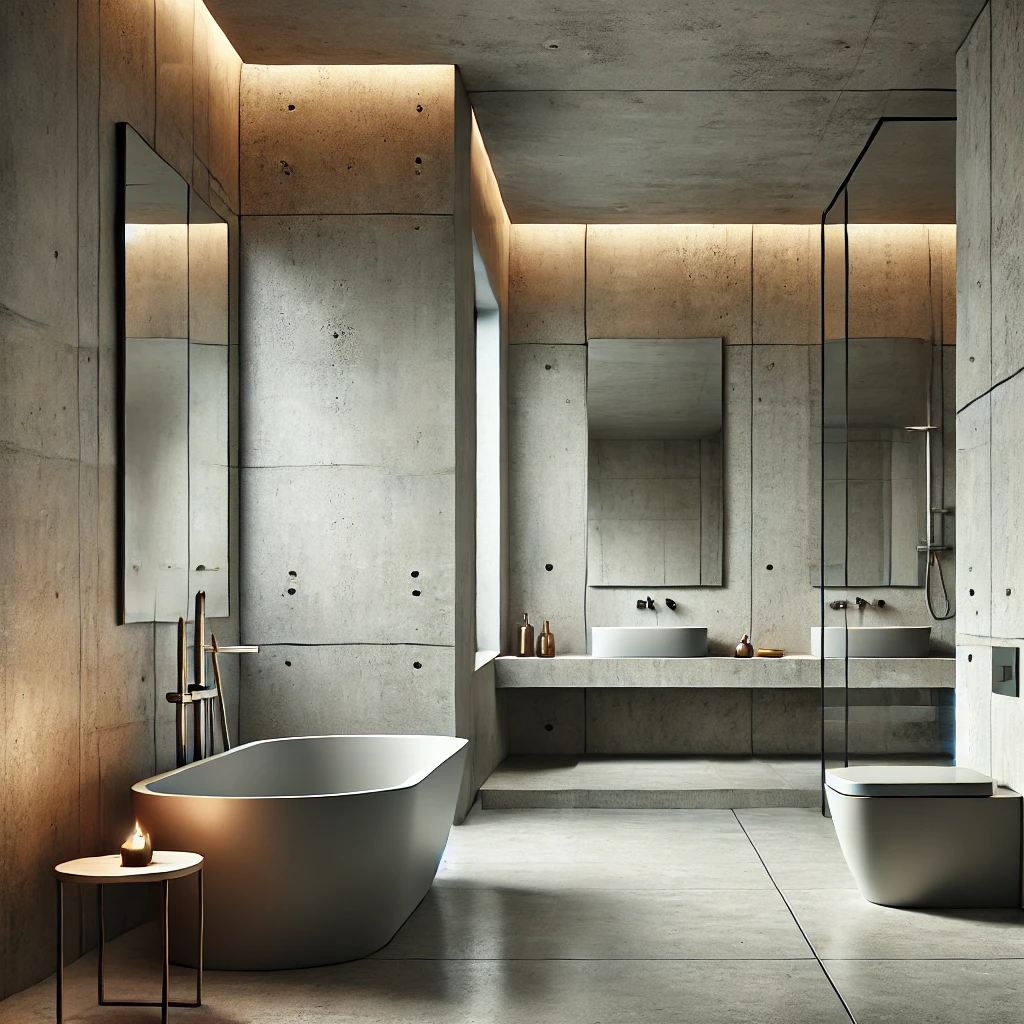
3. Roll-on Concrete and Concrete Wallpaper
Enthusiasm for concrete has led to the creation of innovative products like roll-on concrete. These “concrete wallpapers” are just a few millimeters thick, with a surface made of mineral stone powder. Roll-on concrete can be applied with precision, just like fiberglass wallpaper, offering new possibilities for interior design. It can transform walls, furniture, and even doors quickly and effectively. With the proper treatment, roll-on concrete can also be used on the exterior of buildings.
4. Concrete Effect on Multi-layered Panels and Wall Cladding
Imi-Beton is a patented composite material that looks and feels like concrete. It consists of a flexible mineral plaster with natural marble particles on an MDF base. These panels are much lighter than concrete, making them perfect for furniture, countertops, and wall cladding, both inside and out. Imi-Beton can replicate the texture of wooden or smooth formwork or have a vintage surface.
5. Photorealistic Concrete Wallpaper
High-quality photorealistic wallpaper can also effectively mimic concrete, such as Concrete Wallpaper by Piet Boon (NLXL). These wallpapers are suitable for any living space except wet areas. For wet zones, waterproof vinyl wallpapers with concrete imagery, like Concrete Moiré and Cicadea by Wall & Decó, are ideal. These wallpapers are cut to the size of the wall, ensuring a seamless, realistic concrete effect.
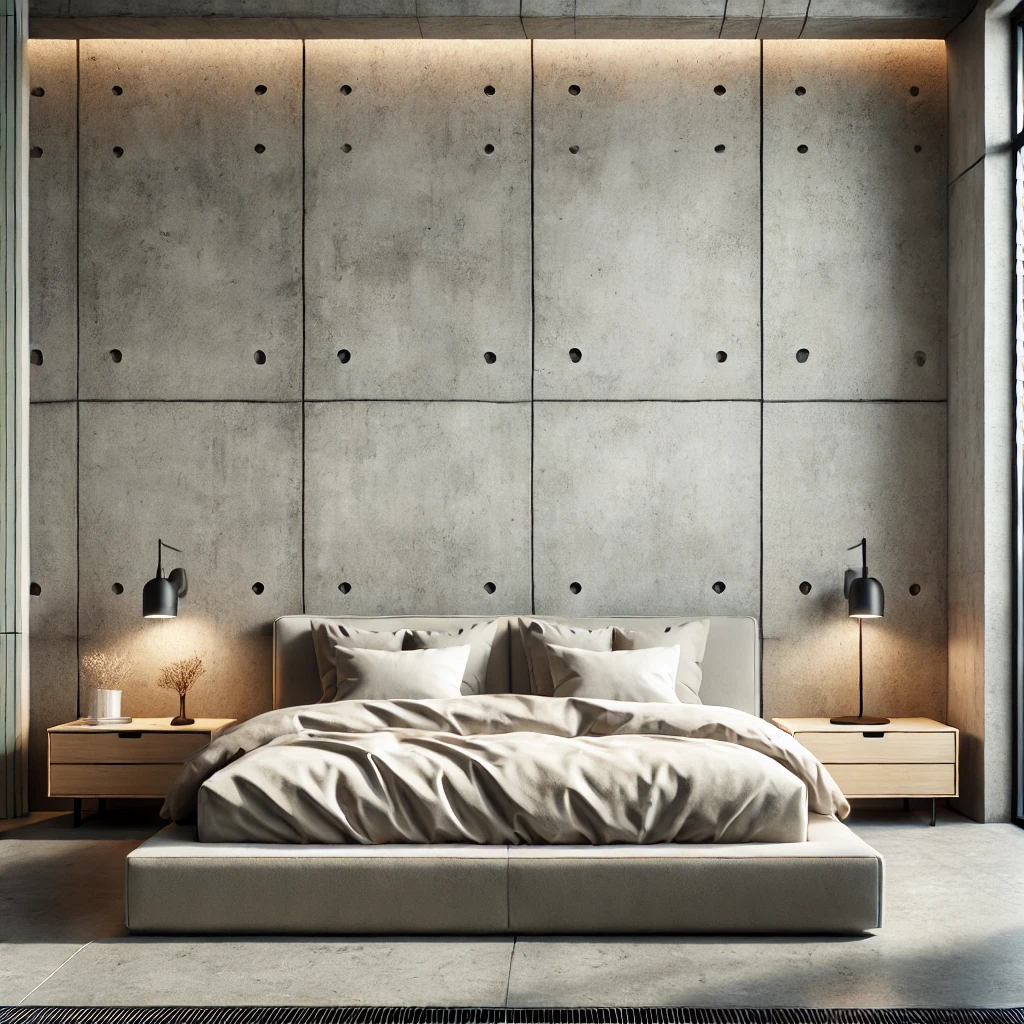
6. Decorative Painting
The final option for creating a concrete effect is decorative painting, where an artist mimics the look of concrete using special glazing techniques. A well-prepared surface is crucial, with smooth sanding, filling, and priming necessary before painting. A skilled artist can create a natural-looking concrete wall, complete with the round indentations left by formwork ties. Sometimes, they even apply finishing touches to real, but imperfect, architectural concrete.
Join the Conversation
Have you used concrete effects or real concrete in your projects? Share your experiences and tips for working with this material in the comments below!
Why Concrete Is Worth the Effort
Concrete offers a unique combination of durability, texture, and aesthetic appeal, making it a favorite among modern designers and homeowners. Its raw, industrial look can transform a space, adding a sense of sophistication and minimalism. Despite its seemingly cold appearance, concrete can actually create a warm, inviting atmosphere when paired with the right materials and furnishings.

For those who appreciate the look of concrete but are hesitant about committing to the material due to its weight or permanence, many alternatives exist. Techniques like mineral plaster, roll-on concrete, and photorealistic wallpaper provide flexibility and allow you to experiment with the concrete look without the challenges of working with actual concrete.
Concrete’s Versatility in Interior Design
Concrete’s versatility is one of its most significant advantages. Whether you’re aiming for a sleek, modern interior or a rustic, industrial look, concrete can be adapted to suit various styles. It works well in living rooms, kitchens, bathrooms, and even outdoor spaces, providing a consistent and cohesive design element throughout the home.
When used thoughtfully, concrete can highlight other design elements, such as wood, metal, or glass. Its neutral color palette allows it to complement a wide range of materials and colors, making it a versatile backdrop for any interior.
The Future of Concrete in Design
As more people embrace industrial and minimalist design trends, the popularity of concrete in interior spaces is likely to grow. New technologies and techniques will continue to make concrete more accessible and easier to work with, offering even more options for those looking to incorporate this material into their homes.
Whether you choose to use real concrete or one of the many imitation techniques available, the key to success lies in careful planning and execution. Working with professionals who understand the intricacies of concrete can help you achieve the desired look and ensure that your concrete surfaces are both beautiful and durable.
Final Thoughts
Concrete is more than just a construction material; it’s a powerful design element that can add depth, texture, and character to any space. Whether you’re building from scratch or looking to update an existing room, consider the various ways you can incorporate concrete into your design. From pure concrete structures to innovative roll-on concrete solutions, the possibilities are endless.
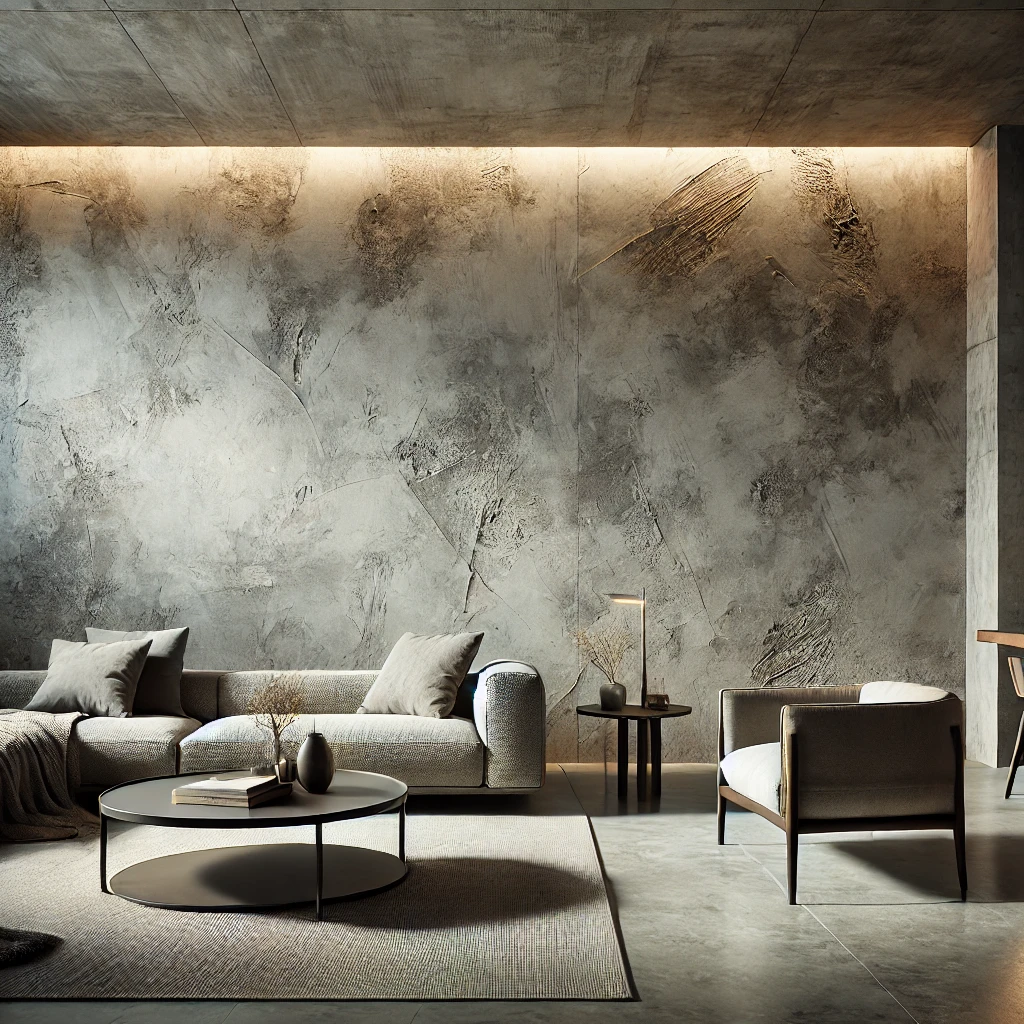
Share Your Concrete Creations
Have you incorporated concrete or concrete-effect materials into your home? What challenges did you face, and what tips do you have for others? Share your experiences, photos, and advice in the comments below!



